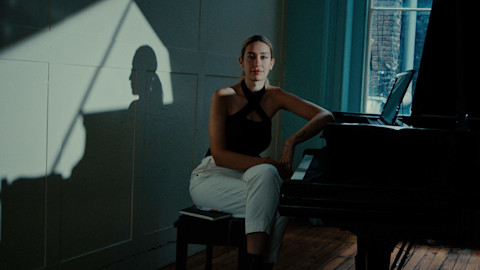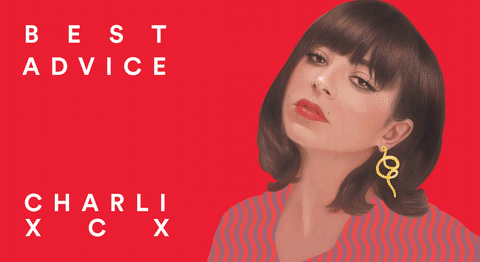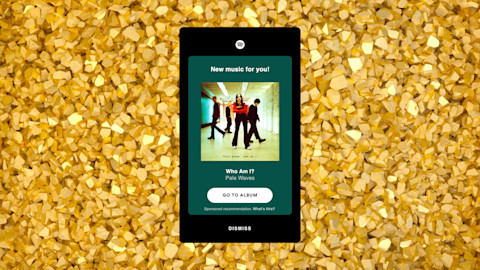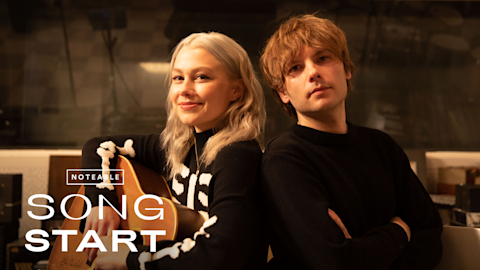Stories
DJs Are Using Spotify Playlists to Feed Fans Their Favorite New Tracks

Selectors such as Bicep, Midland, and George FitzGerald (pictured) discuss the benefits of keeping a running mix of new tunes featured in their sets.
For hardcore dance-music fans, there are few pleasures greater than identifying that one spine-tingling tune you heard your favorite DJ play on Friday night. There are entire online forums dedicated to just this quest, where clubbers upload snippets of smartphone video from the dancefloor and hope that someone can name the apparently Shazam-proof track.
But now some DJs are throwing their fans a bone—a big one. Gone are the days when the contents of a spinner’s crate were a jealously guarded secret. (In some scenes, like Jamaican reggae, selectors would go to extreme lengths, like covering up the center stickers of their records, to thwart prying eyes.) Many of them are creating Spotify playlists to share set highlights.
Bicep
In addition to two collections of their own productions and remixes, Ireland’s Bicep keep a “Feel My Bicep” playlist of tracks played at gigs and on radio shows, under a title that pays homage to the duo’s popular, long-running MP3 blog. At 213 songs and growing, “Feel My Bicep” currently runs to nearly 19 hours of music and counts upward of 8,000 followers. The UK producer and former BBC Radio 1 DJ George FitzGerald keeps a similar playlist, “Played by George FitzGerald,” that he’s been updating since 2015. Kidnap Kid, a fellow veteran of the UK bass scene, maintains “Played by Kidnap Kid,” a tidy playlist spanning techno, deep house, and more, while Midland (whose Fabriclive 94 is one of the year’s most celebrated mix albums) keeps up “Midland Mixtrax,” a must-hear survey of leftfield techno with some savvy curveballs thrown in.
Though the appeal is obvious for underground DJs playing more obscure music, some bona fide superstars are getting in on the act as well. Steve Angello keeps up the wide-ranging “Act III: Paradiso”; spanning Mobb Deep and KRS-One to Chromatics and The Cure, it explores a swath of music far different from his former trio’s EDM stomping ground. And Skrillex’s popular “Skrillex Selects” lives up to the reputation of the EDM figurehead’s famously eclectic tastes.
Nightwave (Photo by Matthew Arthur Williams)
“Streaming is where it’s at nowadays,” says the Glasgow DJ Nightwave, whose fledgling “Nightrave” playlist is a hive for underground dance music and new releases. “Apart from it being an important PR platform, it’s also a great way to connect with people, keep track of stats, and of course find new music for myself as well.”
That connection with fans is key: DJs are finding that their Spotify playlists have opened up a new line of communication with their followers. “People will talk to me about things that I’ve added,” says FitzGerald. “I go ‘round to gigs, and people are like, ‘Will you stick this on your playlist after the gig?’” For FitzGerald, that’s especially gratifying; since he ended his BBC Radio 1 residency in late 2016, his Spotify playlist “actually nicely fills the space that the radio show used to.”
Kidnap Kid, on the other hand, uses his playlist like an archive. “I’ll only put something in my playlist once it’s done the rotation [in clubs], so to speak,” he says. “So once something’s fading out of my DJ sets after four or five months, then I’ll add it to the playlist, so if people want to relive a set they saw and find a track they liked, they might be able to get it there.”
Perhaps even more importantly, Spotify playlists give DJs the opportunity to stretch out and feature music that might not work in nightclub sets. Bicep’s playlist is “a massive mixture of everything,” they say, “though probably more focused on home listening rather than the techno we’d play out.” They also point to their themed uploads. For instance, after an Italo disco party in London, they added a slew of vintage Italo tracks like Mike Mareen’s “Love Spy” and Kano’s “Another Life.”
Kidnap Kid
FitzGerald finds the process of putting together his playlist similarly freeing. “If you’re just in the world of promos and record shops, things can become a bit narrow,” he says. “You find yourself just in a sea of club music. Spotify does make it very easy to sidestep that. I find it quite liberating, really. Just clicking on different artists I’ll come across things, and it reminds me to think about having more ambient things in my sets as bridges, or thinking a little bit more about different styles that I can fit in. You know, the kind of ‘moment’ tracks that people take home from sets.”
No shock that nearly every DJ interviewed for this piece came up as an avid trainspotter, peering over the DJ’s shoulder. “That’s where I came from: The DJ wouldn’t let you know what they were playing,” says FitzGerald. Maybe that’s why they’re so generous with using Spotify to share music with listeners who don’t have access to the same promo pools. “It has sometimes crossed my mind that I really love this one, I don’t want to give this one to people,” FitzGerald admits. But the fact that most promos circulate among DJs for weeks or even months before they’re released means there is some semblance of exclusivity built into the system. “Things only appear on Spotify once they’ve been released,” Kidnap Kid notes, “so if I play something two months before it’s out, and then I stop playing it as much, then it goes in the playlist. I do keep it slightly exclusive for the sets and then shift it over.”
To keep a playlist of this sort does require a certain level of commitment. Kidnap Kid keeps a calendar reminder to update his every Monday morning (and even then, he misses some weeks). Just as crucial is the occasional promotion of a playlist—which some DJs are loathe to do. “In the modern social media landscape for DJs, it feels like a very boring thing to be saying that you’ve updated your playlist,” admits FitzGerald. “But it’s actually something that people are quite happy about. It doesn’t melt the internet down or anything. But genuinely, it’s something people always comment on and say, ‘Oh, I like this track, thanks for doing this.’”
-Philip Sherburne
Spotify for Artists helps you to develop the fanbase you need to reach your goals.
video
How Julia Wolf Made It



